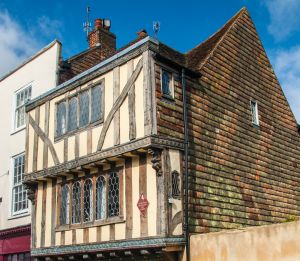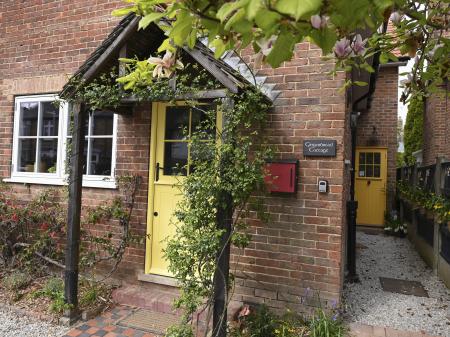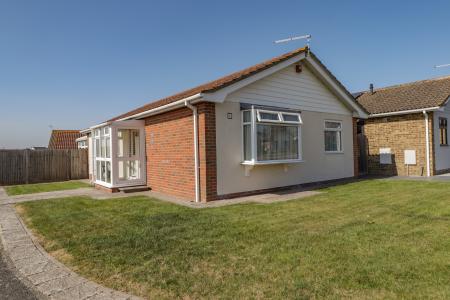Historic Buildings in Kent
- Map of Historic Buildings in Kent
- Map of ALL Historic Buildings in England
- Map of all attractions in Kent
See also our listing of stately homes (historic houses) in Kent
One of Canterbury's best half-timbered buildings. 8 Palace Street is a 13th-century building with later additions. It may have been built as the rectory for the nearby church of St Alphege.
8 Palace Street, Canterbury, Kent, England, CT1 2DY
Heritage Rating: ![]() ?
?
Nearest Self Catering Cottages
Blackfriars consists of the remains of a 13th-century friary on the banks of the River Stour. Blackfriars was founded around 1237 by Dominican monks, whose black surcoat gave them the popular monicker 'Black Friars'.
25 High Street, Canterbury, Kent, England, CT1 2BD
Heritage Rating: ![]() ?
?
Nearest Self Catering Cottages
The Romans erected the first walls around Canterbury between 270 and 290 AD. Very little of those Roman walls remain, but large sections survive of the medieval walls that replaced the Roman structure. The medieval walls surrounded the entire city of Canterbury and were pierced by eight gates, West Gate, North Gate, Quenin Gate, Burgate, Newingate, Riding Gate, Worth Gate, and London Gate. Of these, only West Gate remains.
Canterbury, Kent, England
Heritage Rating: ![]() ?
?
Heritage Highlight: Sections of the original Roman walls still stand to over 16 feet high.
Nearest Self Catering Cottages
One of the iconic landmarks of Canterbury, the old West Gate stands at the west end of the High Street, beside the River Stour. Generations of medieval pilgrims passed under the gatehouse arch on their way to the shrine of Thomas Becket at Canterbury Cathedral. Road traffic now flows through the arch - it's a bit of an eye-opener to see a modern coach navigate the narrow opening!
2 St. Peters Street, Canterbury, Kent, England
Heritage Rating: ![]() ?
?
Heritage Highlight: Old medieval prison cells
Nearest Self Catering Cottages
St Alphege's Church was built around 1070 by Archbishop Lanfranc. It was rebuilt in the 12th century, and again in the 13th and 15th centuries. Among the interesting features is a late 15th-century pillar, funded by a bequest from Thomas Prude. A brass coat of arms has been set into the pillar, with the inscription, 'Gaude Prude Thoma per quem fit ista columna.', which very loosely translates as 'Thomas Prude paid for this column'.
Palace Street, Canterbury, Kent, England
Heritage Rating: ![]() ?
?
Heritage Highlight: A church established by Lanfranc, already described as ancient in the 12th century!
Nearest Self Catering Cottages
Charing Palace is the remains of an 11th-century bishops palace used by Archbishops of Canterbury as a stopping place between Canterbury and their London residence of Lambeth Palace. The village of Charing stood on the main pilgrim route to Canterbury, and it made sense for the Archbishop's to have an official presence there.
Charing, Kent, England
Heritage Rating: ![]() ?
?
Nearest Self Catering Cottages
The main visitor entrance to Canterbury Cathedral precinct is through Christ Church Gateway, a highly decorated ceremonial gatehouse originally built to celebrate the marriage of Arthur, Prince of Wales, to Catherine of Aragon in 1502. Arthur, unfortunately, died a few months later, and the gate was not finished for another 20 years.
The Precincts, Canterbury, Kent, England
Heritage Rating: ![]() ?
?
Nearest Self Catering Cottages
Cobham College is a 14th-century college of priests established by the 3rd Baron Cobham in 1362 and linked to the parish church by a processional passage, parts of which still stand. The college was later transformed into almshouses, a role it still fulfils. The college retains its original medieval hall.
Cobhambury Road, Cobham, Kent, England, DA12 3BG
Heritage Rating: ![]() ?
?
Heritage Highlight: 14th-century hall
Nearest Self Catering Cottages
An ornate mausoleum for the Darnley family of Cobham Hall, built in the late 18th century for the 4th Earl of Darnley. The initial design was by James Wyatt, but the building was actually built by George Dance the Younger. No burials were ever made in the mausoleum, which became a focal point in the landscape park laid out by Humphry Repton.
Cobham Wood, Lodge Lane, Cobham, Kent, England
Heritage Rating: ![]() ?
?
Heritage Highlight: Unusual neo-classical design
Nearest Self Catering Cottages
Conduit House is all that remains of medieval waterworks created to supply the nearby abbey of St Augustine, Canterbury.
Kings Park, Canterbury, Kent, England, CT1 1TF
Heritage Rating: ![]() ?
?
Nearest Self Catering Cottages











